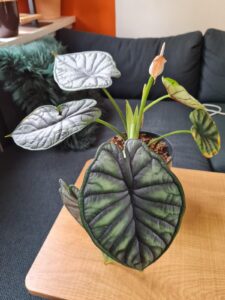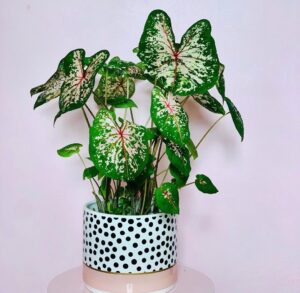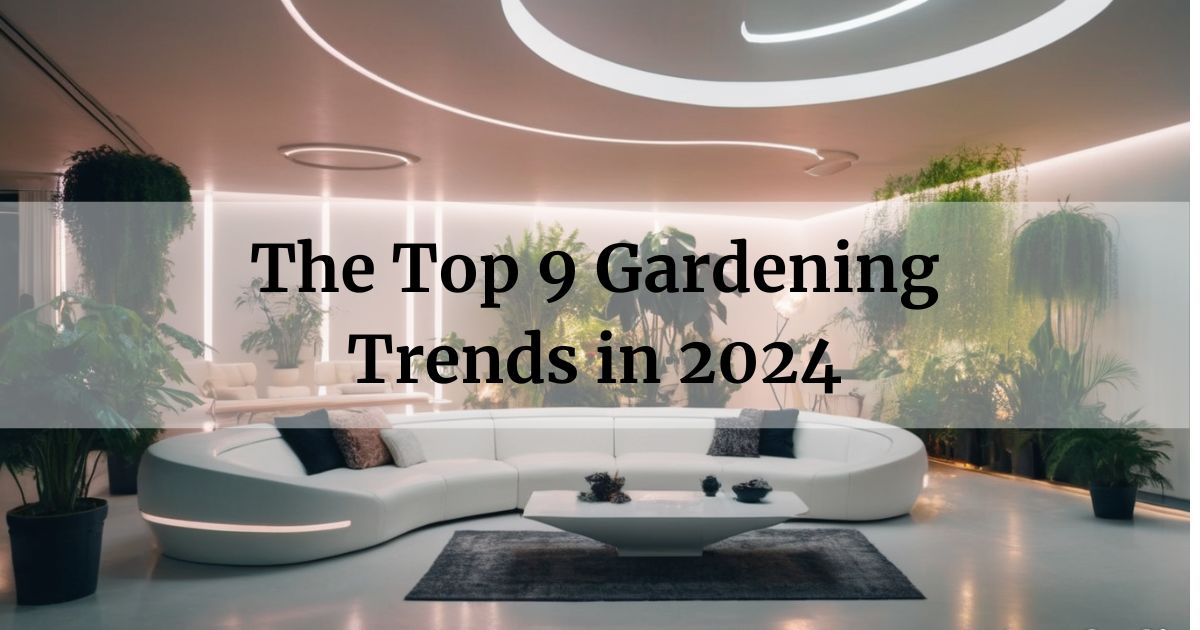
Cutting-edge gardening trends of 2024. From the rise of microgreens packing a punch to the soilless wonders of hydroponics, these trends are reshaping how we cultivate our gardens.
In this article
Indoor Gardening
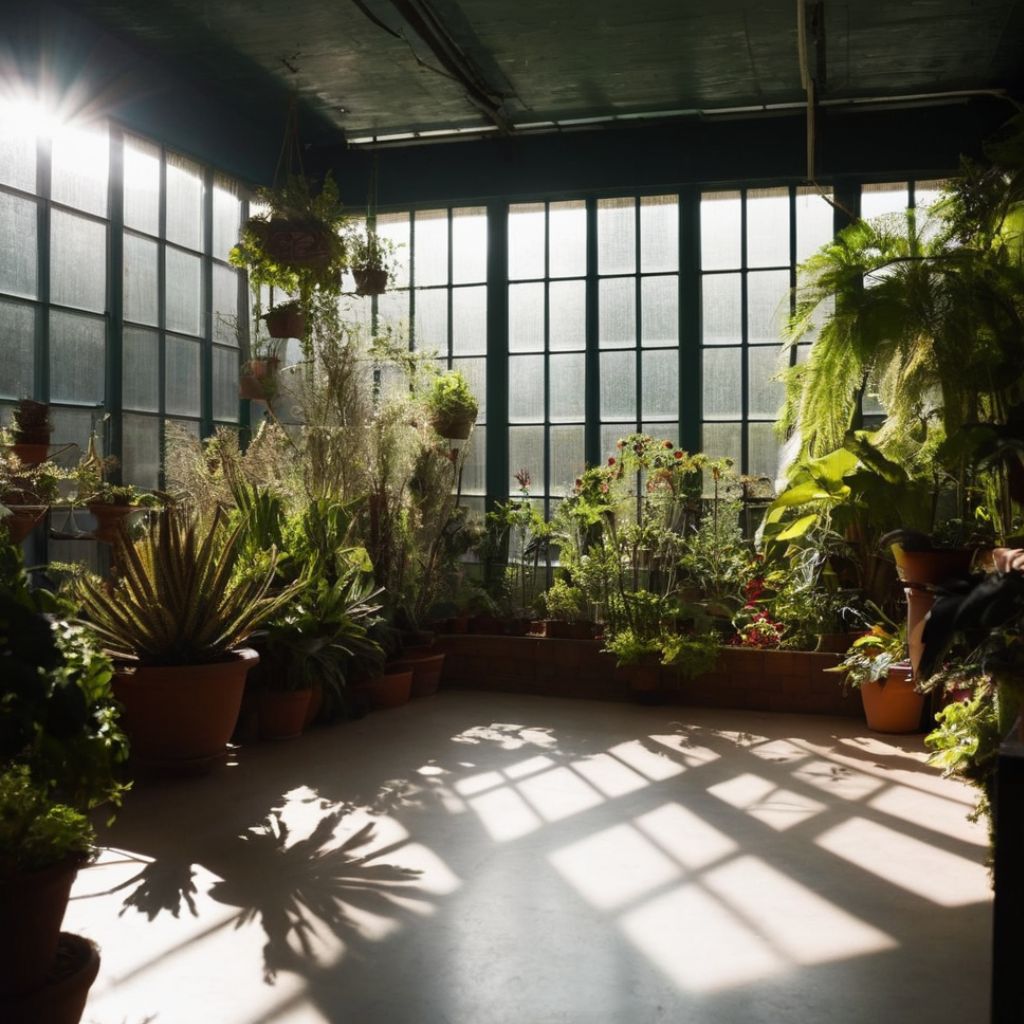
Indoor gardening allows people living in small spaces like apartments to grow their own food and plants without a yard. I’ve personally witnessed this shift as my own apartment balcony has given way to the allure of cultivating a miniature garden indoors.
As urban populations rise and outdoor space decreases, indoor gardening techniques like hydroponics, microgreens, and living walls have become popular ways to incorporate nature indoors. The dual benefits of functionality and aesthetics are what make indoor gardening so appealing.
It has both functional and aesthetic benefits – providing fresh herbs and veggies while also adding greenery and air purification to interior environments. There’s a certain satisfaction in plucking fresh herbs for dinner from your own mini indoor garden.
The ability to control light and climate makes indoor gardening accessible to all skill levels. From experimenting with the ideal conditions for my basil to finding the perfect spot for sun-loving succulents, indoor gardening has been a hands-on lesson in horticulture.
The surge in indoor gardening’s popularity during the COVID pandemic didn’t escape my notice either. As the world outside became uncertain, many turned to hobbies that promised both solace and sustainability. Indoor gardening seamlessly fit into this narrative, offering a self-sufficient and rewarding activity that aligned perfectly with the evolving rhythms of our homebound lives.
READ MORE: 7 Best Indoor Garden Kits [2024]
Urban Gardening
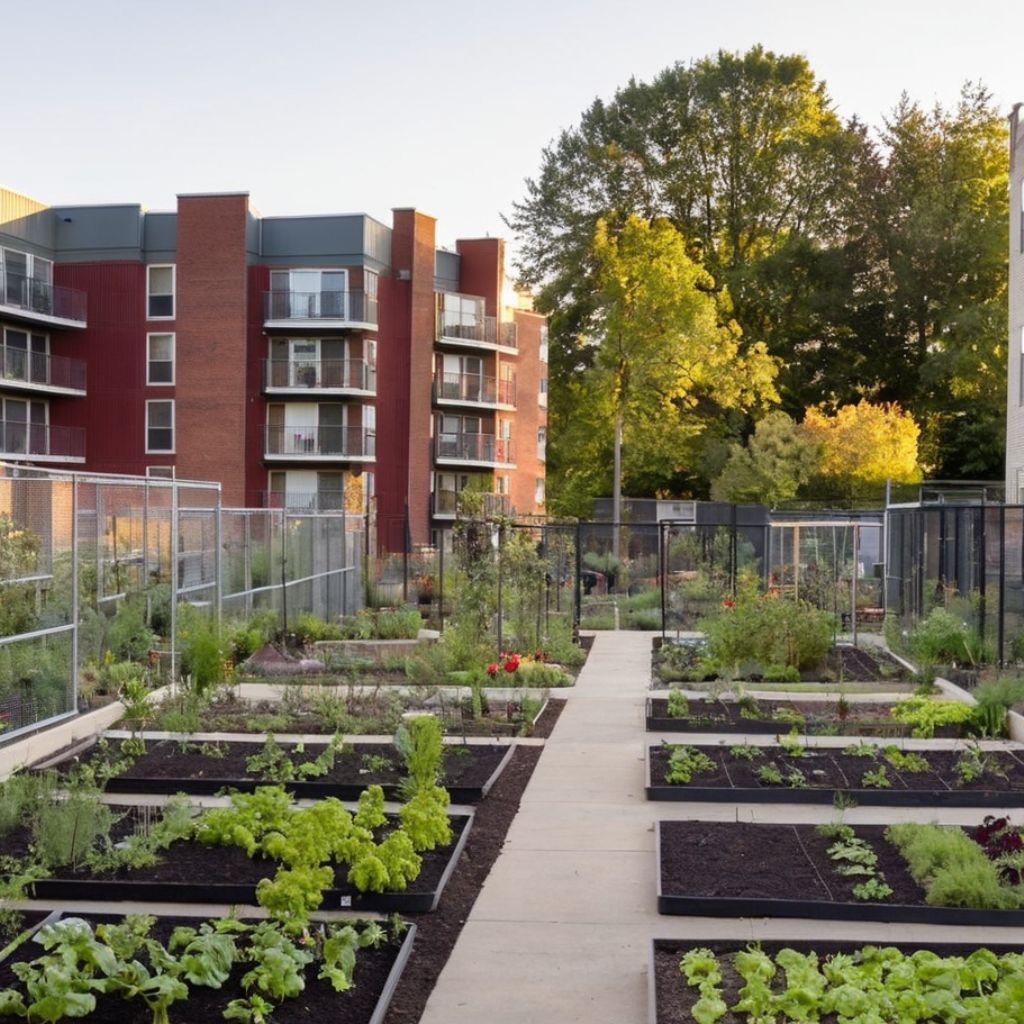
Urban gardening has grown in popularity as a way for people living in densely populated cities to engage in food production despite having limited access to traditional outdoor growing areas. The struggle for space is real, but so is the desire to produce our own food. That’s where urban gardening steps in, offering a breath of fresh air, quite literally.
Methods like container gardening, community gardens, rooftop farms, and edible landscaping provide opportunities for urban dwellers to gather fresh fruits and vegetables. It also has environmental benefits by increasing green space and reducing heat absorption in cities.
My windowsill is now adorned with a colorful array of pots, each housing a different vegetable or herb. It’s a microcosm of freshness right in the heart of the grey city streets.
Beyond the personal gains, there’s something deeply satisfying about being part of a community garden. Sharing plots, swapping gardening tips with neighbors, and celebrating the collective harvest—it’s a camaraderie that’s hard to come by in the anonymity of urban living. Urban gardening is not just a personal endeavor; it’s a movement that contributes to greening our cities, both visually and environmentally.
As our concrete landscapes expand, the importance of introducing green spaces becomes more apparent. Urban gardening isn’t just about personal sustenance; it’s a small-scale revolution against the environmental challenges that come with city living.
Sustainable Practices
More gardeners are adopting sustainable practices in their outdoor spaces in response to rising environmental awareness. As I watch my outdoor space evolve, adopting sustainable practices has been a no-brainer.
Techniques like composting, water harvesting, integrated pest management (IPM) and selecting native plants require fewer external inputs and better support local biodiversity.
Composting reduces waste while improving soil health. Composting has been a game-changer in both waste reduction and soil enrichment. It’s not just about the practicality; it’s about closing the loop, creating a sustainable system within the confines of my own home.
Rainfall is natures gift so it makes sense not to let it go to waste. Water harvesting captures rainfall for irrigation instead of tap water. Watching rain barrels fill up after a downpour is oddly satisfying and makes each drop count.
Integrated Pest Management (IPM) has been my strategy for dealing with unwanted visitors. Instead of reaching for chemical warfare at the first sign of trouble, I’ve embraced a more nuanced approach. Monitoring pests and employing natural deterrents has not only saved my plants but has also maintained a delicate balance in my garden’s ecosystem.
The financial benefits of sustainable practices are not lost on me either. While some may view eco-friendly gardening as an added expense, I see it as a long-term investment. Reduced reliance on external inputs translates to savings on water bills and fewer trips to the garden center for synthetic fertilizers or pesticides. It’s a win for the planet and my pocket.
As climate change casts a more prominent shadow, the urgency to adopt practices that are gentle on the planet will only grow. Gardening becomes not just a personal hobby but a small yet significant contribution to ecological resilience. It’s about embracing solutions that nature offers, fostering a garden that not only sustains itself but also contributes to the broader environmental narrative.
Smart Gardens
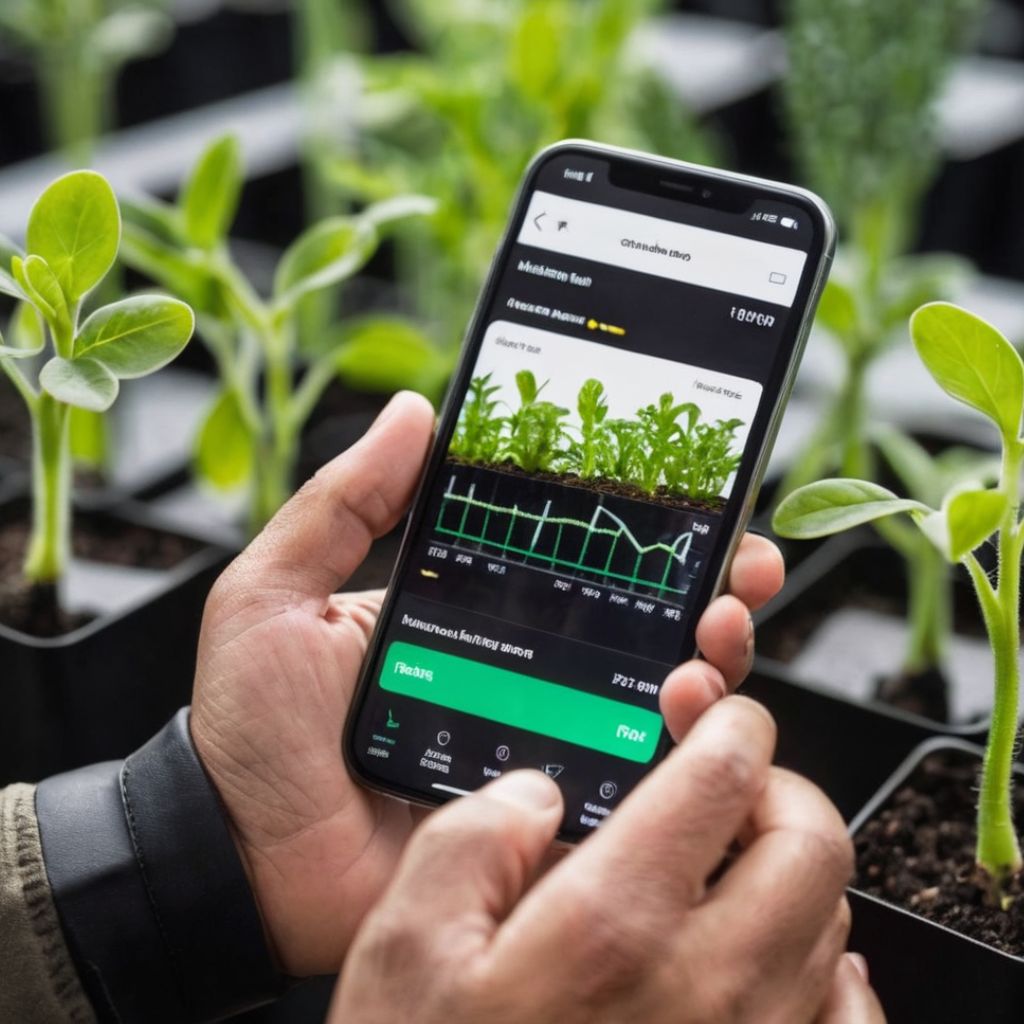
The integration of smart technology into gardening has been a journey of convenience and innovation. While not everyone may dive into this high-tech realm, the efficiency it brings to the table has certainly caught my attention.
Sensors can track soil moisture, light, and other conditions to optimize watering and feeding schedules. It’s like having a personal assistant for each plant, ensuring they receive the right amount of water and sunlight tailored to their individual needs.
WiFi-enabled irrigation has been a game-changer, activating only when necessary. No more wasted water or overwatered plants—the system knows exactly when to kick in. It’s not just about conservation; it’s about smart resource management.
Cameras in the garden might seem a bit James Bond-esque, but they serve a practical purpose. Beyond security, these cameras act as virtual eyes, scouting for any signs of trouble. It’s a proactive approach to pest management, allowing me to address issues before they escalate.
Data-driven insights from IoT sensors have been fascinating. It’s like having a digital diary for your garden, chronicling its growth and performance over time. This information not only enhances gardening skills but also contributes to a more sustainable and productive outdoor space.
Admittedly, these precision technologies might not be budget-friendly for everyone. However, for those with a penchant for innovation and a willingness to invest, the efficiency gains are undeniable. As these tools evolve and prices become more accessible, smart gardening could very well be the next frontier, bridging the gap between food production and sustainable innovation in our backyards.
Native Plants
Embracing native plants in my garden has been a lesson in sustainability and a nod to the wisdom of nature. The shift toward native species wasn’t just about aesthetics; it was a conscious choice to make my outdoor space more resilient and environmentally friendly.
The beauty of native plants lies in their adaptability to local conditions. Once established, they require less coddling, less water, and fewer fertilizers. It’s like letting nature take the reins, allowing my garden to thrive with minimal intervention. The reduced need for pesticides is another perk, creating a harmonious balance that mirrors the ecosystem’s natural resilience.
As climate change alters weather patterns, relying on native species is like having a reliable ally in the face of uncertainty. These plants have evolved to withstand the local climate’s quirks, making them the unsung heroes of a garden that can weather the storm—literally.
The low-maintenance aspect of native gardens is a godsend for anyone with a busy schedule. I’ve found myself spending more time enjoying my garden rather than constantly fussing over it. It’s a testament to the self-sufficiency that comes with choosing plants that are already in tune with their surroundings.
Beyond personal benefits, planting natives is a small but impactful contribution to conservation. The deep root systems of these plants act as guardians against erosion, a silent but crucial role in maintaining the health of the ecosystem.
Additionally, many natives offer attractive flowers, foliage, and fall color supporting native pollinators.
In an era of heightened environmental awareness, the focus on native plants is a natural progression. It’s a choice that resonates with eco-conscious gardeners and homeowners alike, a commitment to environmental stewardship that extends beyond our property lines
Biophilic Design
Bringing the outdoors inside through biophilic design has become a cornerstone of my interior aesthetic, and the impact goes beyond mere decor—it’s a conscious investment in well-being.
Extensive studies demonstrate our innate connection to nature and that even views of green or living artwork can positively impact occupants.
As people spend more time indoors and urbanization increases, the need to experience nature inside becomes heightened. Views of greenery or the gentle trickle of a water feature have become more than just visual elements—they’re a balm for stress, a boost for cognitive function, and a tonic for overall well-being.
The corporate world has caught on to the magic of biophilic touches as well. Offices and public buildings are increasingly adopting these elements, recognizing the tangible benefits they bring to performance, mood, and morale. It’s a subtle yet powerful shift in how we approach our indoor spaces, acknowledging that our surroundings can significantly impact our mental and emotional states.
As our understanding of nature’s profound impact on mental health deepens, I believe biophilic strategies will become commonplace in both residential and commercial settings. It’s not just a design trend; it’s a commitment to nourishing occupant wellness, a recognition that our connection to the natural world is not a luxury but a fundamental part of a healthy, balanced life.
Low-impact Gardening
As awareness of sustainability issues rises, gardeners are increasingly adopting low-impact techniques that reduce pollution, conserve resources and protect biodiversity.
Low-impact practices rely more on organic matter and beneficial microbes than synthetic chemicals. Native plants thrive with less watering once established. Watching my native plants thrive with less watering, once they’ve found their roots, is a testament to the resilience and adaptability of nature.
Manual weeding and pest monitoring have replaced the knee-jerk reaction of reaching for chemical sprays. It’s a more hands-on approach that not only protects my plants but also fosters a deeper connection with the intricacies of my garden’s ecosystem.
Compost and mulch build healthy soil to withstand climate stresses better than chemical treatments.
The growing awareness of pollinator decline has fuelled my commitment to low-impact gardening.

Watching bees and monarch butterflies dance through my garden is a reward in itself. It’s a small but impactful contribution to the conservation of these essential pollinators.
The appeal of low-impact styles extends beyond personal satisfaction—it aligns with the concerns of eco-conscious homeowners. The fear of runoff contamination and the use of neonic pesticides has prompted a reevaluation of gardening practices. The realization that natural alternatives not only protect the environment but also produce stunning gardens is a paradigm shift in horticulture.
And let’s address the elephant in the room—low-impact gardening is not a compromise on aesthetics. On the contrary, my garden stands as a testament that sustainability can coexist with beauty. From vibrant blooms to lush foliage, nature’s palette is on full display, proving that a commitment to low-impact practices doesn’t mean sacrificing the visual allure of a gorgeous gardens.
Microgreens
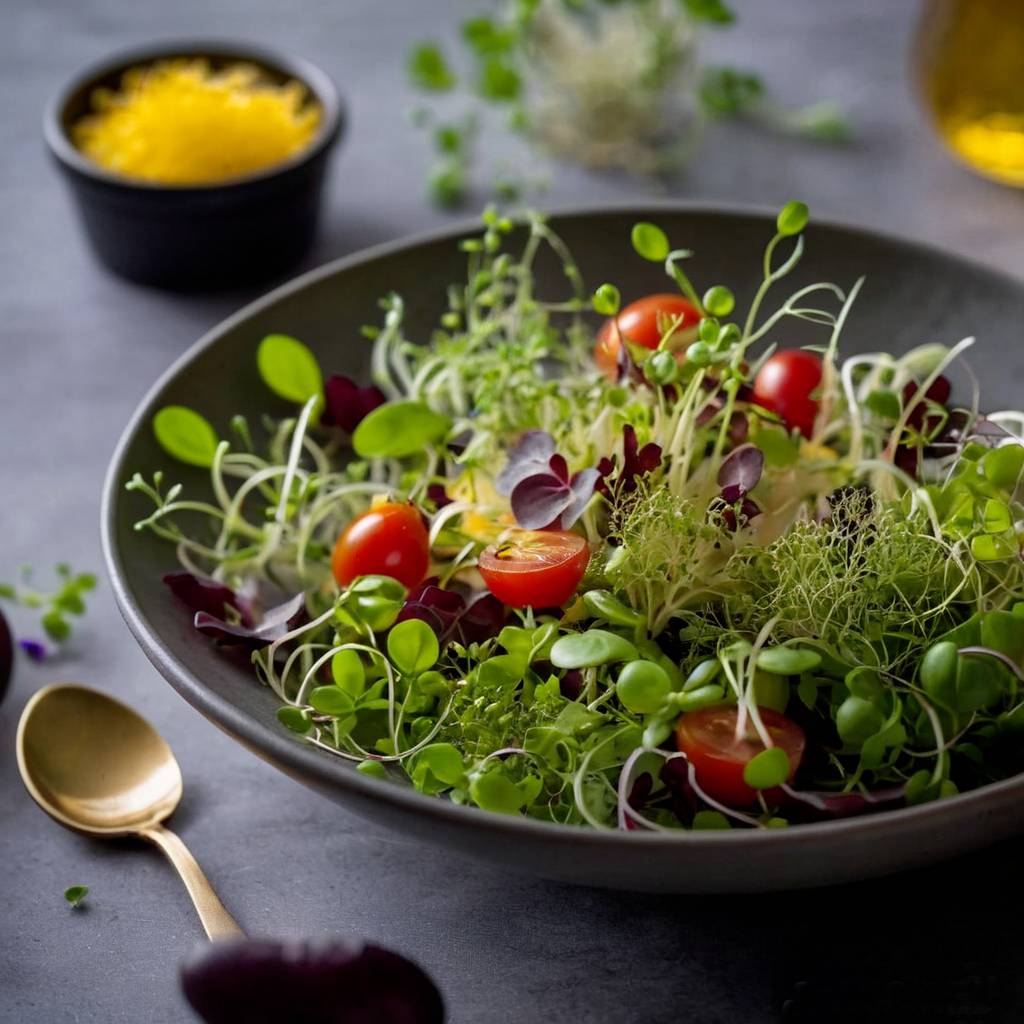
Microgreens are immature vegetable and herb seedlings that are harvested young, before the first “true leaves” develop.
Compared to their full-grown counterparts, microgreens pack a much more concentrated dose of nutrients into a small and tasty package. They have higher levels of vitamins, minerals, phytonutrients and antioxidants than fully-grown greens.
Their mild flavors also add flavor and texture to dishes. Because they grow quickly in just 7-14 days with simple setups, microgreens have become attractive for home and commercial food production.
From salads to sandwiches to main courses, these little greens bring not just nutrition but also a burst of flavor and texture to every dish. It’s like having a miniature garden on my plate, elevating even the simplest meals to gourmet status.
YOU MAY ALSO LIKE: The Complete Guide to Growing Microgreens Indoors
With a rapid growth cycle of just 7-14 days and a setup that’s as simple as it gets, they have become a go-to for both home and commercial food production.
Microgreens are a reminder that you don’t need acres of land or months of waiting to enjoy the rewards of homegrown, nutritionally-dense produce—sometimes, all you need is a small tray and a bit of patience.
Hydroponics and Aeroponics
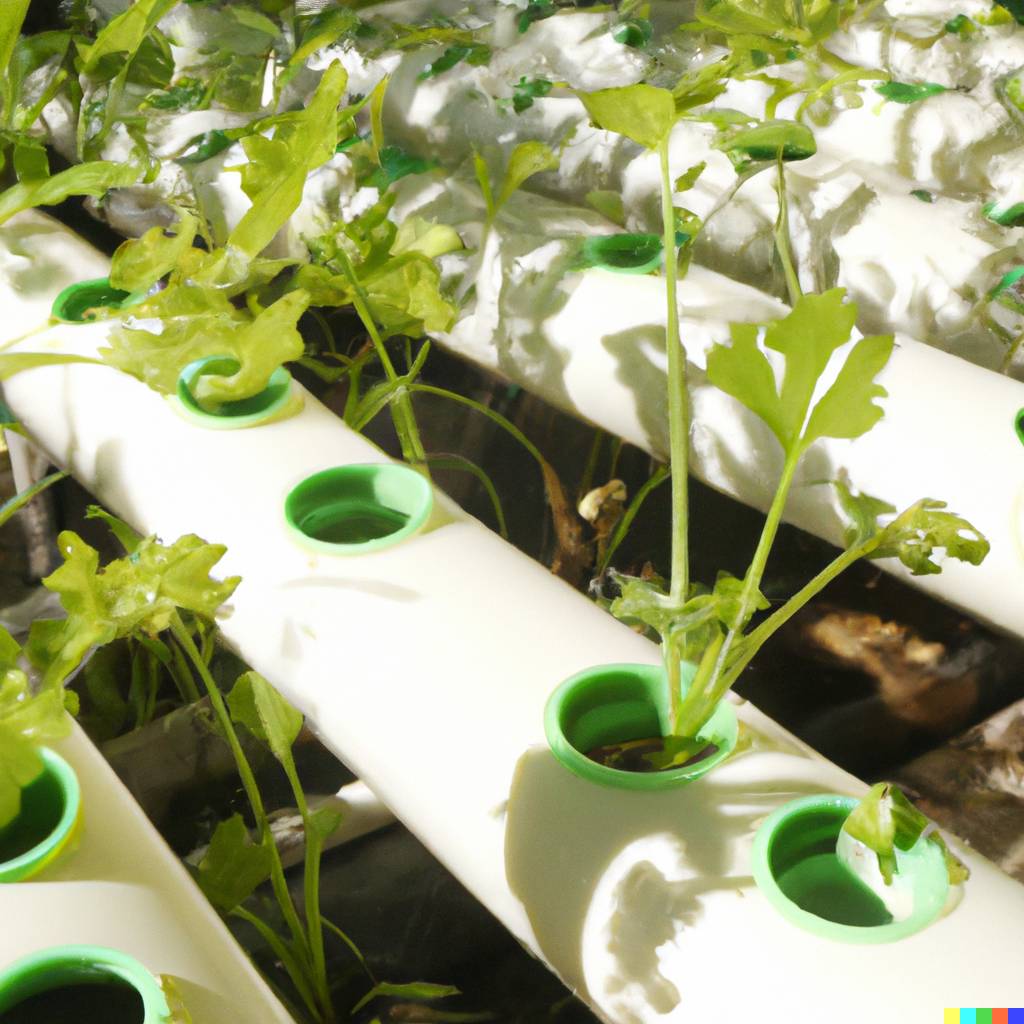
Hydroponics and aeroponics allow for produce to be grown without soil by supplying nutrients through water.
This allows for yields up to 10 times higher than traditional gardening, using less space and water. This is a game-changer.
In a landscape where urban populations are on the rise, and arable land is becoming a luxury, hydroponics and aeroponics present themselves as viable solutions. It’s like bringing the farm into the city, a shift that not only addresses the challenges of limited space but also aligns with the growing demand for locally sourced, fresh produce.
The mechanics behind hydroponics and aeroponics are fascinating. Hydroponic systems circulate nutrient-rich water directly around the plant roots, while aeroponic systems utilize a fine mist to deliver nutrients. This opens possibilities for year-round harvests and niche specialty crops.
As the technology advances, these systems are becoming more accessible. What was once considered high-tech and reserved for large-scale agriculture is now finding its way into the homes of everyday gardeners. Affordable, plug-and-play options are democratizing hydroponics and aeroponics, making it possible for small-scale producers and homeowners to experiment with these innovative techniques.
The global demand for food is an undeniable driving force behind the innovation in hydroponics. Greenhouses equipped with hydroponic systems can sprout virtually anywhere, ensuring a controlled environment for crops. The ability to fine-tune variables like temperature, light, and nutrients translates to reliable, high yields even in the most challenging of conditions.
Hydroponics and aeroponics are not just gardening methods; they’re a glimpse into the future of sustainable, efficient, and high-yield agriculture. Their control over variables like temperature, light, and nutrients ensures high, reliable yields even in challenging environments.
Happy gardening!


